Back when I was new to gardening (green, you might say), I walked into a plant nursery looking for perlite, as I’d run out of it for my DIY potting mix.
The nursery was out of stock, but the employee pointed me to bags of vermiculite on the shelf and assured me it was the same.
“This is what we use in our greenhouse. It works the same way perlite does,” he promised. “You can use it in your potting mix.”
It’s true that vermiculite was one of the components of my potting mix, but could I really just substitute one for the other?

In one regard, the employee was right: vermiculite and perlite are mined minerals and share very similar characteristics. Heck, even their names sound like they could be related.
Characteristics of Perlite vs. Vermiculite
| Perlite | Vermiculite | |
|---|---|---|
| Ideal for seed starting or blending into potting mixes | Yes | Yes |
| Approved for organic gardening | Yes | Yes |
| Loosens heavy, compacted soil | Best | Good |
| Provides drainage | Best | Good |
| Retains moisture and nutrients | Good | Best |
| pH level | 7.0 to 7.5 | 7.0 to 7.5 |
| Decomposes in soil | No | No |
But in another regard, the employee was off base. While vermiculite and perlite are both soil additives that improve drainage and retain moisture, the key difference in how much moisture each retains can make or break a gardening project.
Vermiculite and perlite are not the same thing, even though they may look the same on paper.
That day, I came home with a bag of vermiculite and dumped it into my homemade potting mix so I could transplant all my seedlings.
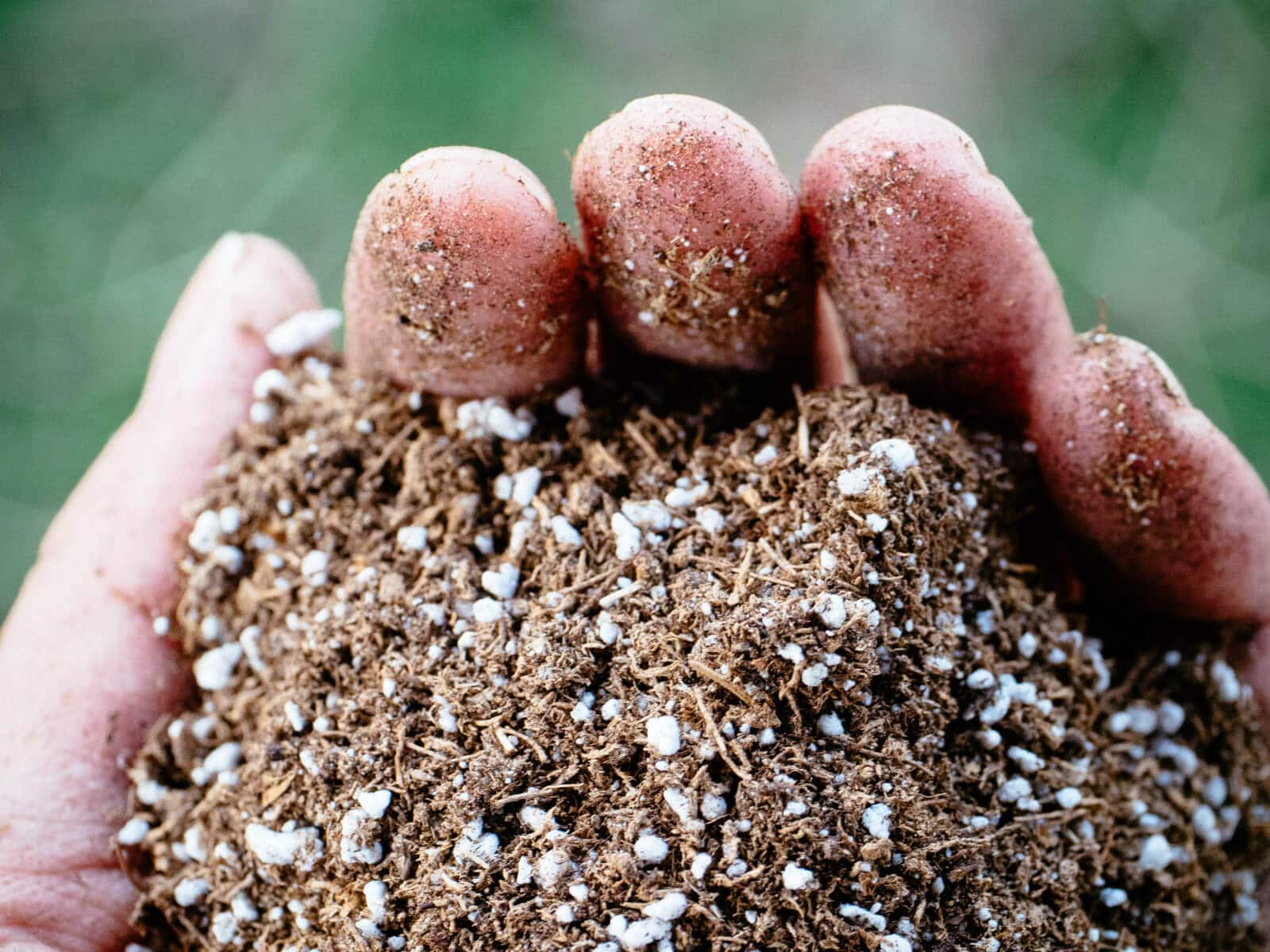
Related: How to Repot Tomato Seedlings
Right away I noticed something: the potting mix was fully saturated and not draining as quickly as my previous mixes did.
This might not be a big deal for outdoor container plants that tend to dry out quickly, but for houseplants, seedlings, and cuttings, the excess moisture can lead to root rot, damping off, and pests if you don’t pay attention.
Here’s what you need to know so you don’t make this mistake.
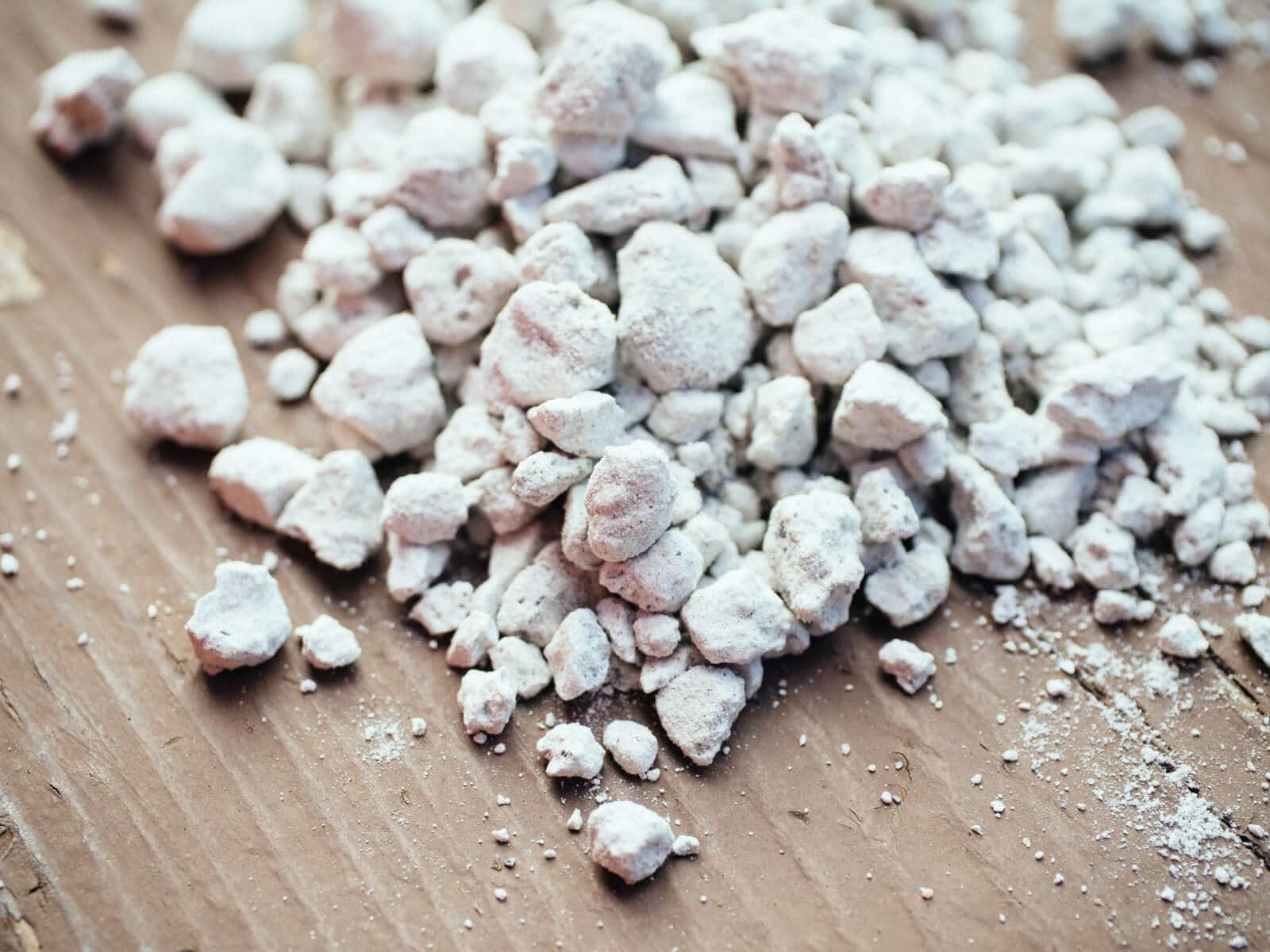
What is perlite?
Nicknamed “volcanic popcorn,” perlite is made by heating volcanic glass to super high temperatures until it expands and “pops” into the white, porous, lightweight rock that resembles little Styrofoam balls.
(Despite similarities in appearance, Styrofoam should never be used in gardens or as a substitute for perlite.)
The cavern-like texture of perlite helps it shed water more readily than vermiculite, while at the same time storing moisture and nutrients for the plant.
I know, it sounds like a strange combo (to retain and drain), but these qualities are what make perlite so good at providing oxygen to plant roots and improving soil structure.
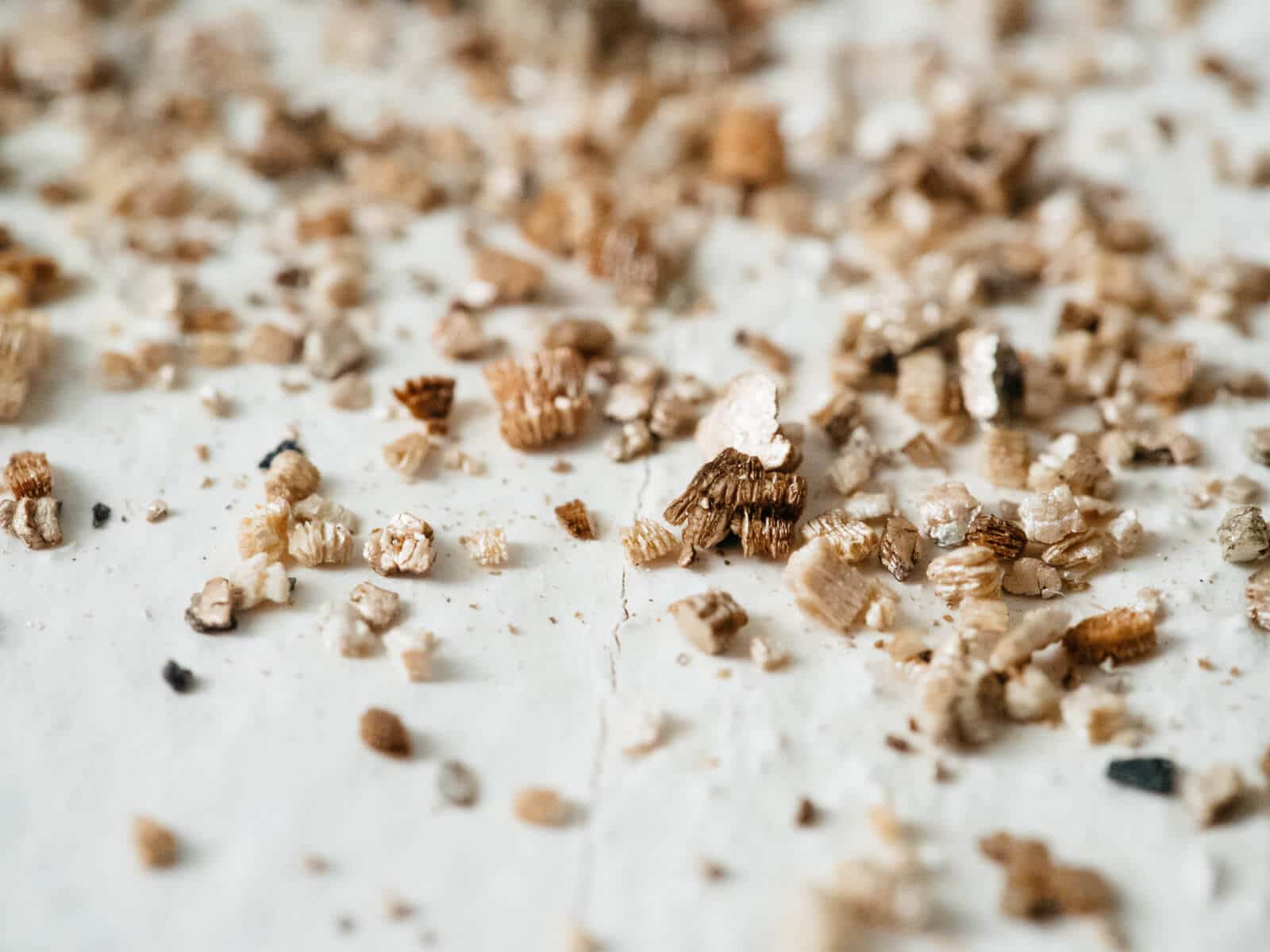
What is vermiculite?
Like perlite, vermiculite is a naturally occurring mineral that expands when heated.
Scientifically speaking, it’s the name for a group of hydrated magnesium iron aluminum silicate minerals (phyllosilicates) that look like shiny, silvery gold to grayish brown flakes.
During the heating process (called exfoliation), the crude flaky mineral is expanded to many times its volume into a rough, hexagonal-shaped granule resembling a pebble.
These chunky granules are further processed into the coarse, medium, and fine grades of vermiculite that we see and know in gardening.
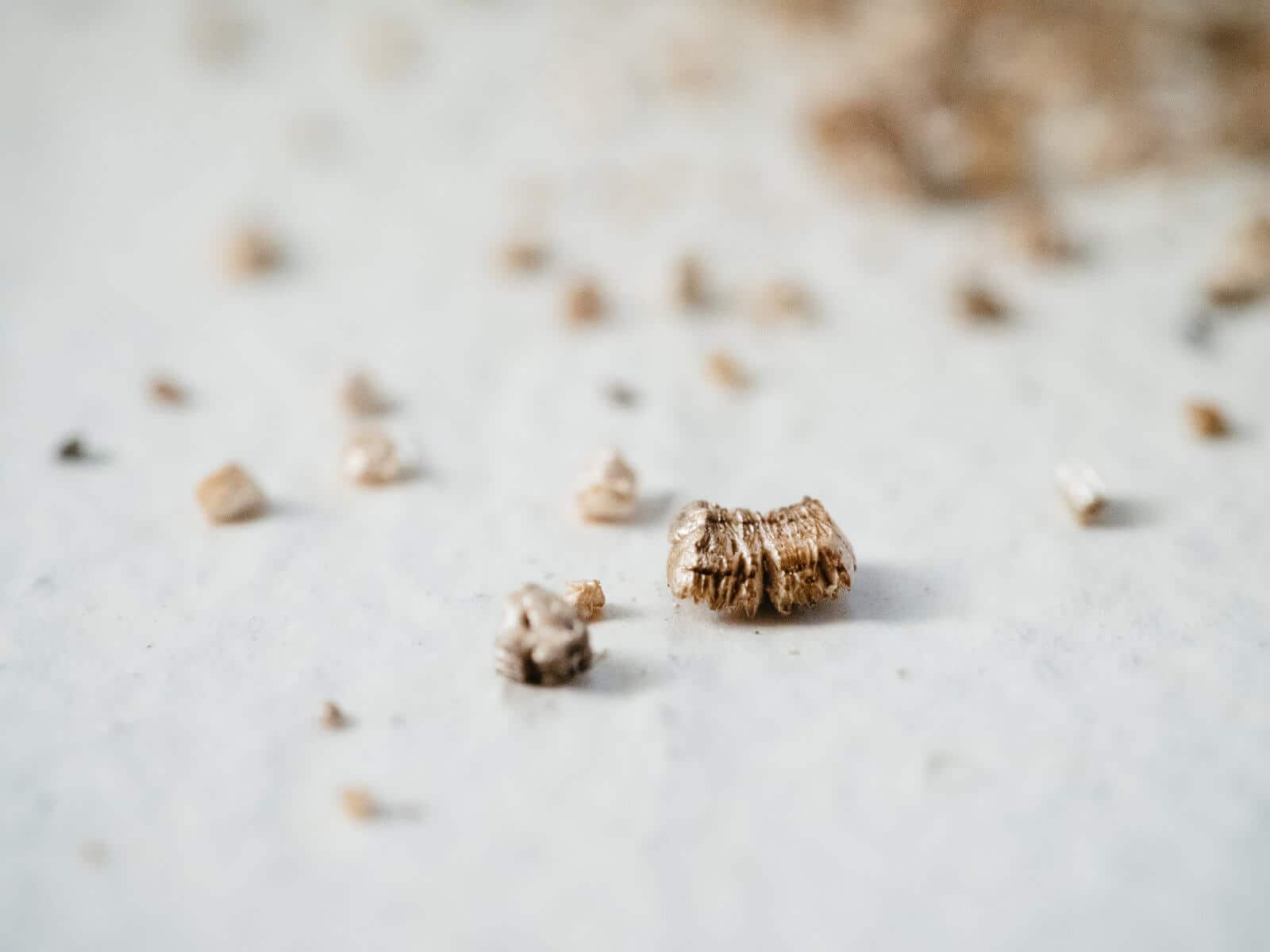
Expanded vermiculite is a lightweight, sterile, and inert material that is non-combustible and non-reactive to all but the strongest acids. It’s also non-toxic and safe to use in a variety of applications.
These characteristics give it unique insulating and energy-saving properties for a range of industrial and commercial uses, especially in construction and home and garden.
Vermiculite is used for special coatings and packaging, fire protection, loose-fill insulation, concrete screeds and plasters, swimming pool liners, and potting mixes or potting soils. It’s the same material used in gas fireplaces with ceramic logs to help the flame spread across the burner more evenly.
For horticultural use, vermiculite is found in the following four different grades, or granule sizes:
| Type of Vermiculite | Grade | Granule Size |
|---|---|---|
| Super coarse vermiculite | #4 | 4mm to 8mm |
| Coarse vermiculite | #3 | 3mm to 6mm |
| Medium vermiculite | #2 | 2mm to 4mm |
| Fine vermiculite | #1 | 1mm to 3mm |

Does vermiculite contain asbestos?
The short answer: no.
If you’re buying horticultural vermiculite sold in stores today, then that vermiculite does not contain asbestos and is not dangerous for your garden. (Though it’s recommended to wear a dust mask when handling large amounts of vermiculite, due to the fine particles.)
At one time, however, vermiculite did have asbestos, and it may still exist in places like the attic insulation of older homes.
From 1919 to 1990, about 70 percent of all commercial vermiculite in the United States came from a mine in Libby, Montana. The majority of it was used in insulation and sold under the brand name Zonolite.
The vermiculite from the Libby mine contained a naturally occurring asbestos called tremolite-actinolite. After it was discovered, the mine shut down.
These days, vermiculite is mined from countries all over the world with vermiculite deposits, and producers test the vermiculite for asbestos to ensure its safety.
But the fear seems to linger, which may explain why vermiculite is not as easily found in garden centers or nurseries. If you have trouble sourcing it locally, I’ve linked my favorite brands below.
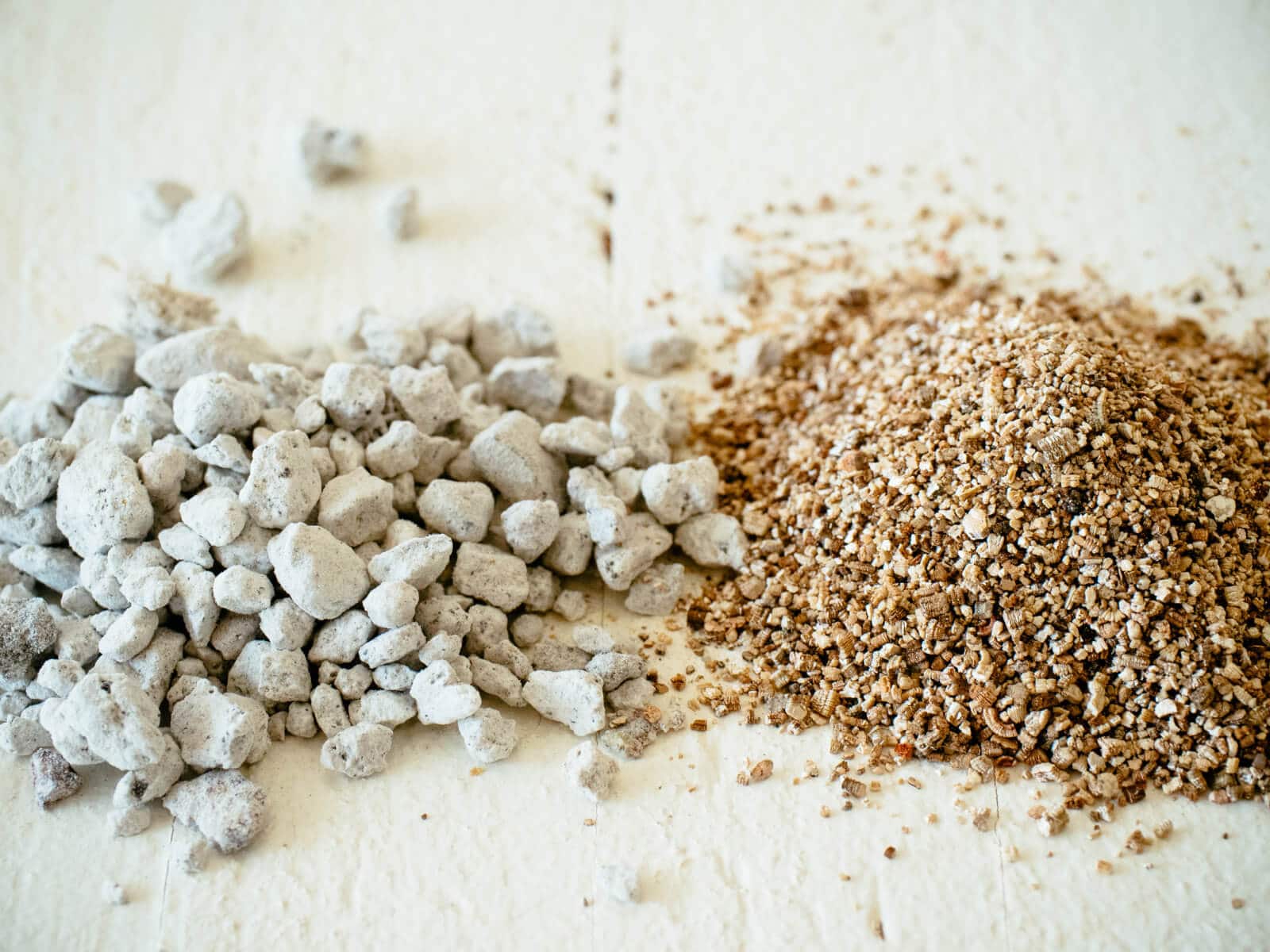
Perlite vs. vermiculite: how do you know which one to use in the garden?
Like perlite, vermiculite is an effective soil conditioner that can loosen compacted soil, provide drainage, and hold three to four times its weight in water.
But—and this is an important but—vermiculite is more compressible and less porous than perlite, giving vermiculite higher water-holding capacity when it’s used as a planting medium.
Vermiculite acts more like a sponge in the way it soaks up water and holds on to it. Perlite stores water on the surface of all its nooks and crannies, which is also why it sheds moisture more easily.
Disclosure: If you shop from my article or make a purchase through one of my links, I may receive commissions on some of the products I recommend.
Use perlite if:
- You want to loosen heavy clay soil. Perlite helps break up surface crusts and reduce soil compaction.
- You’re repotting houseplants or plants that like to stay on the drier side. Shade-loving houseplants, succulents, and cacti do better with less water, so a potting mix amended with perlite helps prevent root rot and fungal disease.
- You garden in a wet or humid climate. Adding more perlite to containers or garden beds helps keep the soil from becoming waterlogged.
Use vermiculite if:
- You’re starting seeds. Because vermiculite holds moisture better than perlite, it helps keep seeds from drying out during germination. Vermiculite is an excellent choice for covering hard-to-start seeds or seeds that need light for germination.
- You’re repotting outdoor container plants. Potted plants tend to dry out faster outside, especially if they’re in porous containers like terra cotta or fabric pots. Adding vermiculite to your potting mix helps them retain moisture better.
- You garden in a dry climate. Adding more vermiculite to potting soil and soilless mixes conserves moisture in the growing media.
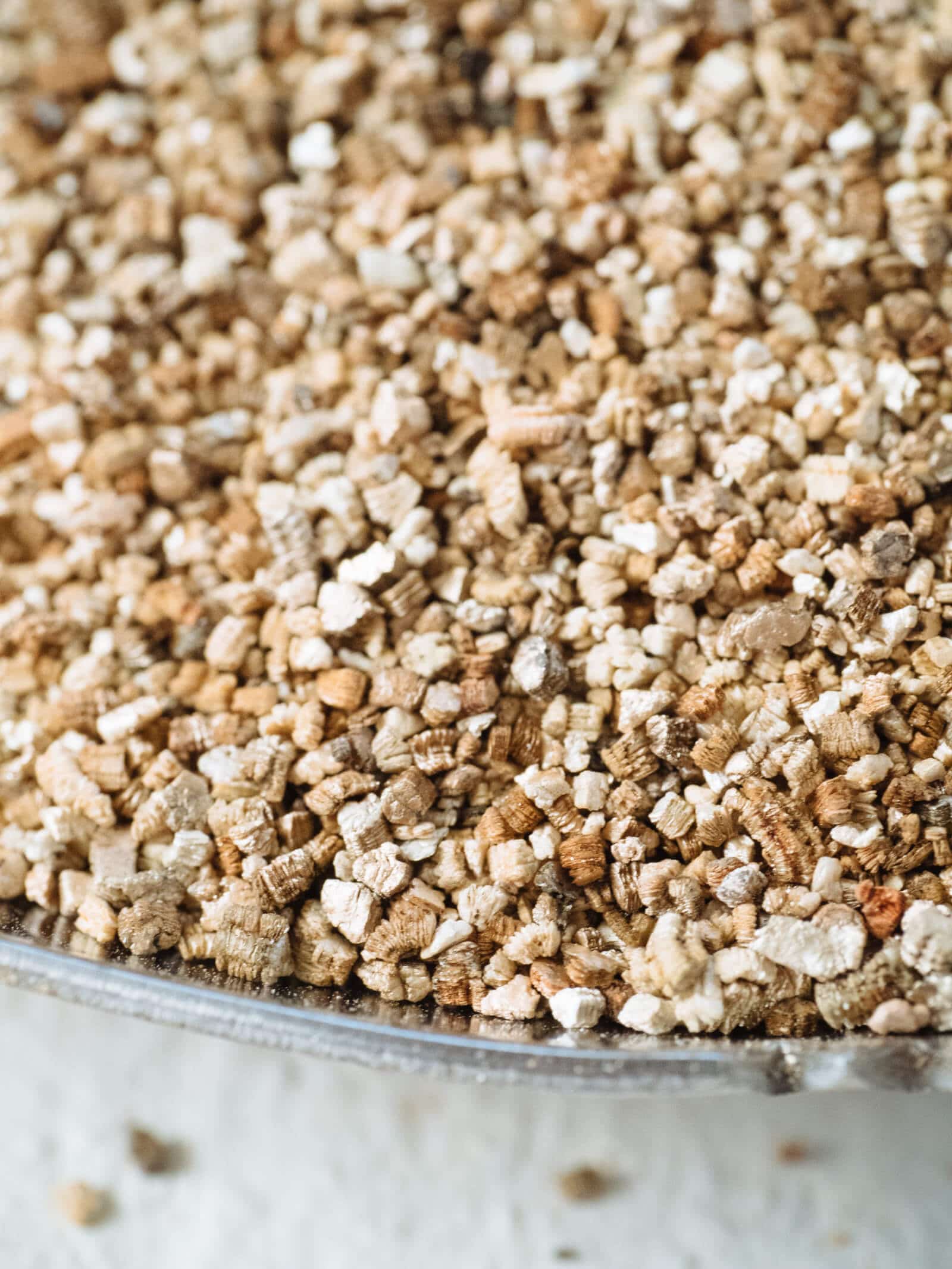
Remember this general rule of thumb:
Use perlite when you want better drainage and aeration.
Use vermiculite when you want more moisture retention.
Common questions about perlite vs. vermiculite
Can you use perlite or vermiculite in organic gardening?
Perlite and vermiculite are both natural mined minerals. Although they go through some physical processing, they’re both USDA-approved for use in certified organic agriculture. So if you do organic gardening, then yes, perlite and vermiculite are considered safe “organic” additives.
Can you grow plants in just vermiculite?
Because of its excellent water-holding capacity, vermiculite works well on its own as a growing medium for seedlings that need constant moisture without being oversaturated.
It’s especially good for indoor seed starting as vermiculite promotes faster germination and helps anchor young root systems, whether it’s used alone or as part of soil or soilless mixes.
Can you mix perlite and vermiculite?
Yes, you can mix perlite and vermiculite in your seed-starting mix or potting mix, since each ingredient has different functions and benefits.
Perlite acts as an aerator, helping the soil shed water. Vermiculite acts as a sponge to help the soil hold moisture. Both of them work in tandem to give your soil the right balance of drainage and water retention.
Can you use perlite or vermiculite in a raised bed?
You can use perlite or vermiculite directly in raised beds and in-ground garden beds to improve soil structure.
Mix the perlite or vermiculite into your existing soil so each ingredient makes up around 10% to 50% of the total volume of soil, depending on how much drainage or water retention you need.
What happens if you breathe in perlite and vermiculite dust?
The dust created by perlite and vermiculite are one of the biggest disadvantages of handling the materials. While they’re regulated as a “nuisance dust” by OSHA (Occupational Safety and Health Administration) and are not considered hazardous, long-term inhalation may make the lungs more susceptible to irritation or respiratory disease.
If you’re sensitive to dust or plan to handle large amounts of perlite or vermiculite in the garden, you can mitigate any problems by wearing a dust mask or covering your nose and mouth with a bandana.
Where to buy perlite and vermiculite
[show_shopthepost_widget id=”3922892″]
Espoma Organic Grade 1 Fine Perlite | GROW!T Grade 2 Medium Perlite | Mother Earth Grade 3 Coarse Perlite | Mother Earth Grade 4 Super Coarse Perlite | Espoma Organic Grade 1 Fine Vermiculite | PLANT!T Grade 2 Medium Vermiculite | PLANT!T Grade 3 Coarse Vermiculite | PLANT!T Grade 4 Super Coarse Vermiculite
This post updated from an article that originally appeared on February 27, 2020.


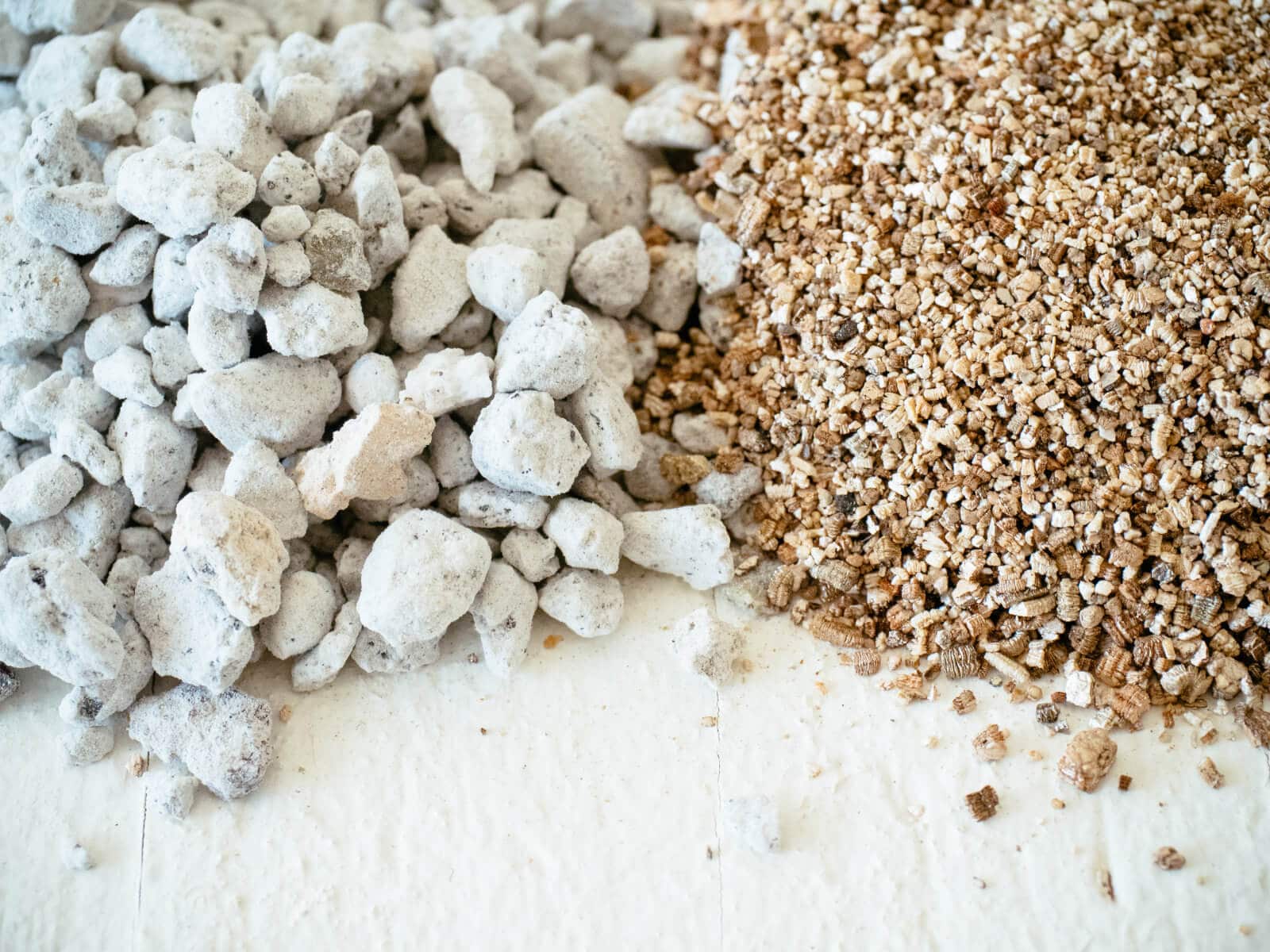













I truly enjoy your articles. They’re an excellent ‘refresher’ when it comes to gardening. I first took the Master Gardener course in 2007 and have worked with those principles ever since. However, I’ve forgotten more than I remember. Your articles are ‘right on’ when it comes to what I think I remember from my MG days. Thank you sooooo much for taking the time to do the research and writing about gardening. I look forward to reading your articles every time.
Pat Allen
Can you use pumice in place of perlite??
Hi, Linda. My wife bought 4 planters that are about 20 inches high and made from recycled rubber (tires I think). I calculate that I’ll need 3.6 cubic feet to fill each of them. I recognize that buying soil to fill them is probably not the best approach. I believe that they will be planted with flowers. Can anyone suggest a good “mix” to fill them with??
Thanks,
Mike
Hi Linda,
Excellent article,
I wish I read your article 2 weeks ago.
I wouldn’t have made the mistake I made.
If my hard work fails, at least now I know how to go about it.
Sal
Truly excellent article that really clarifies the difference. I want to take cuttings of fruit trees and now know which medium to use. THANKYOU!
Hi Linda
I came across your article in an attempt to figure out which is better for a wicking bed. I am creating small-to-medium wicking planters and one of the designs I like advises to use perlite for the bottom water reservoir layer. Reading that vermiculite retains more water I am now uncertain. Which one would be better to hold maximum amount of water (at the lowest weight) and to also allow for the soil to absorb water from the base reservoir layer? The layers are separated with a geotextile to avoid the soil getting waterlogged.
Thank you in advance
I was very confused about the difference between the two. I just wanted to say thank you for clearly explaining it. I never leave comments like this, but I really appreciate how well-written and informative this article is. Thanks!!
You’re welcome Deborah, I’m glad this helped you sort out the difference!
just want to add that I purchased a large bag of perlite not realizing that it came in different grades so the one I brought home had huge particles. I thought these were too big to use in my seed starting mix and, easy fix, filled a plastic locking top bag and smashed the particles down with a rolling pin. Thank you for all the info on how vermiculite and perlite are different:)
Great tip Gene!
Is Vermiculite that’s used in gas fires the same as the Vermiculite that can be used with soil?
Thanks for an excellent article. Its very well written and answered all of my questions.
Guess what, I will now check your articles.
Keep writing, you are doing an amazing work
Brilliantly explained, and just what I was after. Thank you (perlite=popcorn=airy= easy to remember!)
Very clear explanation of the differences and application of perlite and vermiculite. I bookmarked this page. Thank you, Linda.
Hi, Linda. I’m new to the growing your own food community and, like others throughout, I’m loving your website so thank you for your wonderful advice and the time you’ve put into it.
Garden in a bucket. For many reasons, I will be growing my fruits & veggies in buckets. I’ve read your article on perlite vs vermiculite and, while it sounds like I should go with vermiculite due to my area being low-moisture most of the year, any thoughts on this before I transfer my seedlings?
Thank you in advance.
It depends on what your soil currently looks like. I assume you’re using potting soil in the buckets? Or are you making your own? If the buckets are plastic or steel with only a few drainage holes, they’ll hold water more, and you don’t want the soil to stay wet all the time. Other variables include: will the buckets get full sun all day or be in partial shade, are they large or small (larger buckets hold more moisture), the types of plants you’re growing in them (some need more water than others, some like to dry out a bit between waterings), etc.
Hi Linda!
When reading your article, I was surprised to see that perlite is a mineral bond (?) that includes aluminum. I try to avoid aluminum at all costs in everything. Obviously I don’t use aluminum foil or disposable trays. I do have aluminum sidimg that was already on the older home we bought several years ago.
Aluminum to me is scary. My grandpa had Alzheimer’s and my mom’s memory is not doing so great. Aluminum is comnected with Alzheimers. It is one of the few metals that can cross the brain barrier. Even mercury does not do that.
Aluminum can sometimes show up on the ingredients list of foods. And I’ve heard of it in agricultural soil products. Perhaos because it is in perlite.
I once heard that aluminum looks like magnesium to the body, and so, if you are deficient in magnesium while aluminum is present in your body, your body will take it up, but cannot actually use it.
Anyway, it makes me worried that using perlite will introduce aluminum into the soil. There are certain plamts, like cocoa beans, that uptake aluminum from the soil readily. Intersstingly, cocoa beans have magnesium, amd so, perhaps eating the cocoa which contains aluminum will not be too dangerous because the body will have magnesium present at the same time. Perhaps plants also take up aluminum confusing it for magnesium when there is not enough magnesium present. But I know that living organisms do need trace amounts of certain metals.
Do you know anything about the saftey of perlite? I know you stated it is non-toxic. I also know that if I prefer to stick with only vermiculite in potting soil, asbestos can be a concern. But it is naturally occuring in soils, and I don’t think there is any harm from ingesting plants raised in asbestos (other than hazards of it being airborne).
Perlite is approved for organic gardening by OMRI and NOSB. Aluminum toxicity only occurs at certain levels and any amount that may (or may not) be present in perlite has not been found to have any adverse effects in humans. What’s more risky is actually inhaling perlite dust in large amounts (for example, if your workplace handles perlite frequently).
Also, as mentioned in this post, there’s no longer any asbestos concerns with today’s vermiculite mined in the U.S.
Linda, you forgot to tell Talitha the most important thing. Clay minerals are build up with aluminium.
But people lock on too much to one atom/molecule. I.e. ammonia NH4OH & chloric acid HCl are dangerous when eaten. So ammonium chloride NH4Cl must be double bad? No, it’s the salt used in the traditional Dutch candy called “drop”.
Not growing food in anything that contains aluminium in any form means you’ll never eat again.
Would it be acceptable to mix both together into soil?? Also thank you for the great article.
Yes you can, if your soil needs both drainage and water-holding capacities.
Thank you! I always forget and I come back to this post every year haha!
Very good article. It answered all my niggling questions. Thank you Linda.
You’re welcome, I’m glad it was helpful!
Thank you for the information! Very helpful.
You’re welcome!